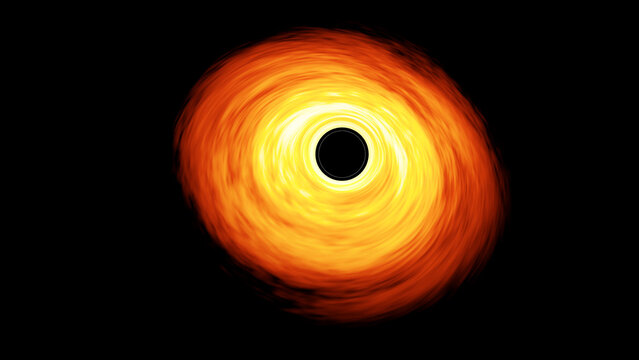
Simulation of glowing gas around a black hole. Image Credit: Chris White, Princeton University
At the center of every galaxy sits a supermassive black hole. Now, the combined expertise of three researchers working on different properties of black holes has delivered the most accurate model of Sagittarius A*, the monster at the center of our own galaxy, the Milky Way.
The achievement, reported in The Astrophysical Journal Letters, combines the detailed simulation of the motion of the gas surrounding the object with observations of the famous black hole – the first direct image of which was released just a few months ago – flickering.

The flicker indicates that the black hole is lazily feeding on the gas around it, but an exact understanding was missing. Lena Murchikova, Chris White, and Sean Ressler put their respective work together to get a more holistic picture of the black hole, creating the first single model that shows how gas travels at the galactic center. They found the most likely scenario of Sagittarius A*s feeding is gas being blown off from stars at long distances falling into the black hole rather than a slow siphoning off of the orbiting material.
“The result turned out to be very interesting,” Murchikova from the Institute for Advanced Study, said in a statement.
“For a long time, we thought that we could largely disregard where the gas around the black hole came from. Typical models imagine an artificial ring of gas, roughly donut-shaped, at some large distance from the black hole. We found that such models produce patterns of flickering inconsistent with observations.”
Murchikova’s second-long observations of the flickering and White’s model of the gas very close to the black hole needed the input from Ressler’s stellar wind model. This model brings more realism by simulating how the stars near the galactic center might be losing material that gets caught by the black hole.
“The model was not built with the intent to explain this particular phenomenon. Success was by no means a guarantee,” commented Ressler of the University of California Santa Barbara. “So, it was very encouraging to see the model succeed so dramatically after years of work.”

“When we study flickering, we can see changes in the amount of light emitted by the black hole second by second, making thousands of measurements over the course of a single night,” explained White of Princeton University. “However, this does not tell us how the gas is arranged in space as a large-scale image would. By combining these two types of observations, it is possible to mitigate the limitations of each, thereby obtaining the most authentic picture.”
The work provides precious insights into what goes on around the fascinating object. And, let’s be real, the simulation is extremely cool.






